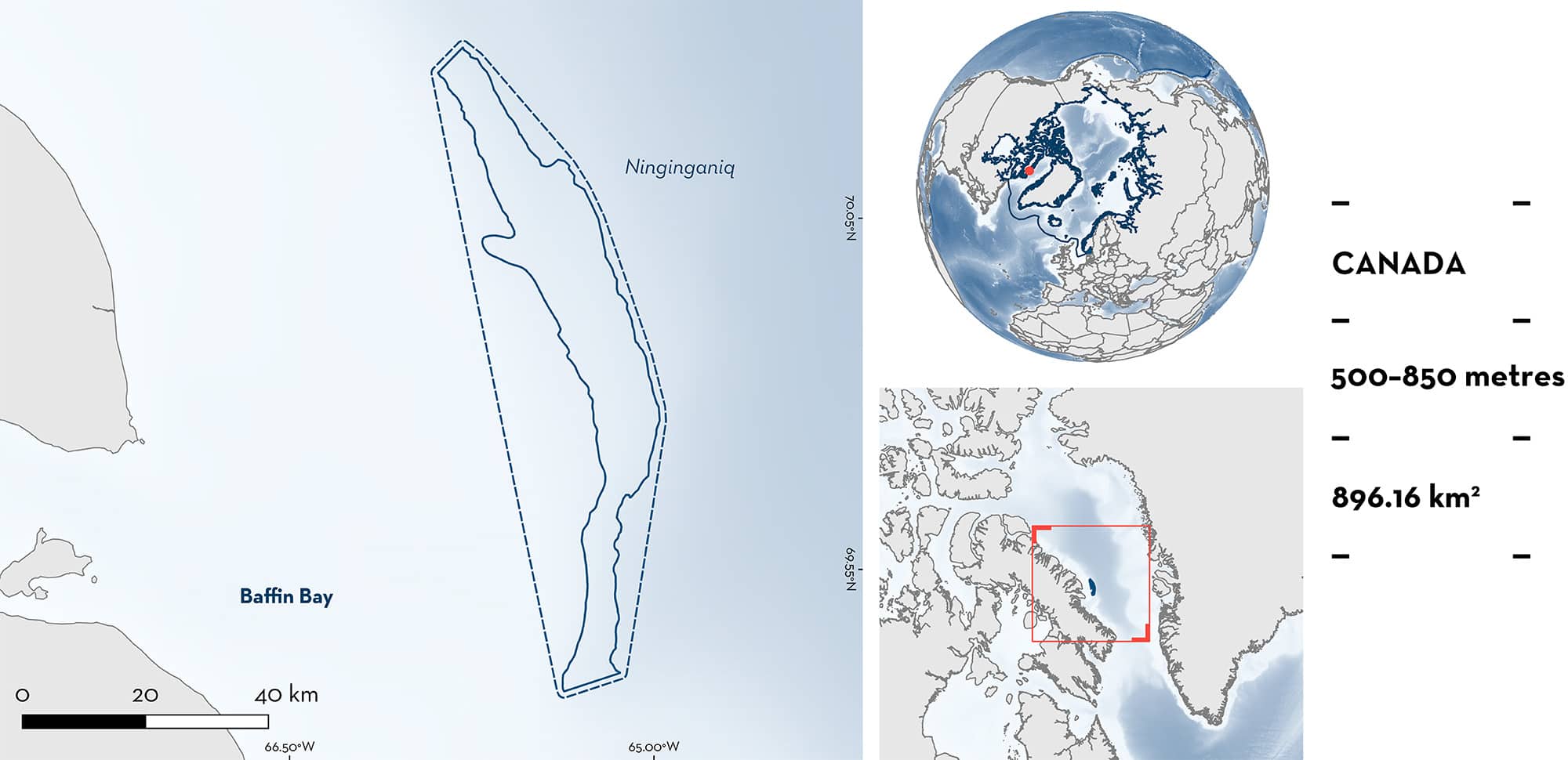ISRA FACTSHEETS
ISRA FACTSHEETS
POLAR WATERS REGION
Ninginganiq
Summary
Ninginganiq is located near the shelf break, offshore of eastern Baffin Island, Nunavut, Canada. This area is situated at the edge of the Home Trough. The benthos is characterised by rock and gravel deposits. Within this area there is: reproductive areas (Arctic Skate Amblyraja hyperborea).
Download factsheet
Ninginganiq
DESCRIPTION OF HABITAT
Ninginganiq is located near the shelf break off Isabella Bay and Aulitiving Island on the eastern side of Baffin Island, Nunavut, Canada. This area is situated just beyond the Ninginganiq National Wildlife Area, at the edge of the Home Trough. The benthos is marked by rock and gravel deposits (Finley et al. 1994). Bottom temperature is mainly between 0 to 1.5°C (Zweng & Münchow 2006).
The Baffin Island coast experiences colder, fresher water masses from the Arctic, with the Baffin Island Current ranging from 0 to 5°C at the surface and salinities of 30 to 32. This main current interacts with the tides, wind-driven currents, and the underwater topography of the area to produce rich upwellings of zooplankton of the genus Calanus in the early boreal autumn (Finley et al. 1994). High productivity is also associated with the sea ice melts from the fjords as organic carbon content increases in the water column. Ice melting starts in April, leading to a completely ice-free bay by September (Pedro et al. 2023).
This Important Shark and Ray Area is benthic and subsurface and is delineated from 500 m to 850 m based on the depth range of the Qualifying Species in the area.
CRITERION C
SUB-CRITERION C1 – REPRODUCTIVE AREAS
Ninginganiq is an important reproductive area for one ray species.
Between 2001 and 2023, 8,325 trawl set surveys were conducted by Fisheries and Oceans Canada (DFO) in Northwest Atlantic Fisheries Organization (NAFO) Subarea 0 (Baffin Bay, Davis Strait, and Eastern Hudson Strait) at depths between 102 and 1,502 m. Surveys were conducted during the ice-free months, between August–November (K Hedges unpubl. data 2024). Within these surveys, 3,311 Arctic Skates were caught of which 233 were neonates or young-of-the-year (YOY) (172 contemporary records from 2009–2023; 61 historical records from 2001–2009). All animals measuring 20 cm total length (TL) or less were classed as neonates and YOY (D Kulka unpubl. data 2024). The hatching size for this species is 10–14 cm TL (D Kulka unpubl. data 2024). Neonates and YOY were captured at depths from 254 to 1,462 m and only by three of the gear types used in 2,554 trawls (‘Bacalao 6’, n = 6; ‘Alfredo-03’, n = 144; ‘Cosmos-2000’, n = 84).
Within Ninginganiq, 43 trawl sets were conducted and 43 Arctic Skates were captured at depths of 215–1,472 m (n = 35 skates from 2009–2023). Of these, 25 (n = 24 from 2009–2023) were neonates and YOY primarily captured at depths of 500–850 m. Neonates and YOY at Ninginganiq represent 10.3% of all records across NAFO Subarea 0. The large sampling effort in the Canadian side of Baffin Bay highlights the importance of this area for reproduction.
Download factsheet
SUBMIT A REQUEST
ISRA SPATIAL LAYER REQUEST
To make a request to download the ISRA Layer in either a GIS compatible Shapefile (.shp) or Google Earth compatible Keyhole Markup Language Zipped file (.kmz) please complete the following form. We will review your request and send the download details to you. We will endeavor to send you the requested files as soon as we can. However, please note that this is not an automated process, and before requests are responded to, they undergo internal review and authorization. As such, requests normally take 5–10 working days to process.
Should you have questions about the data or process, please do not hesitate to contact us.


